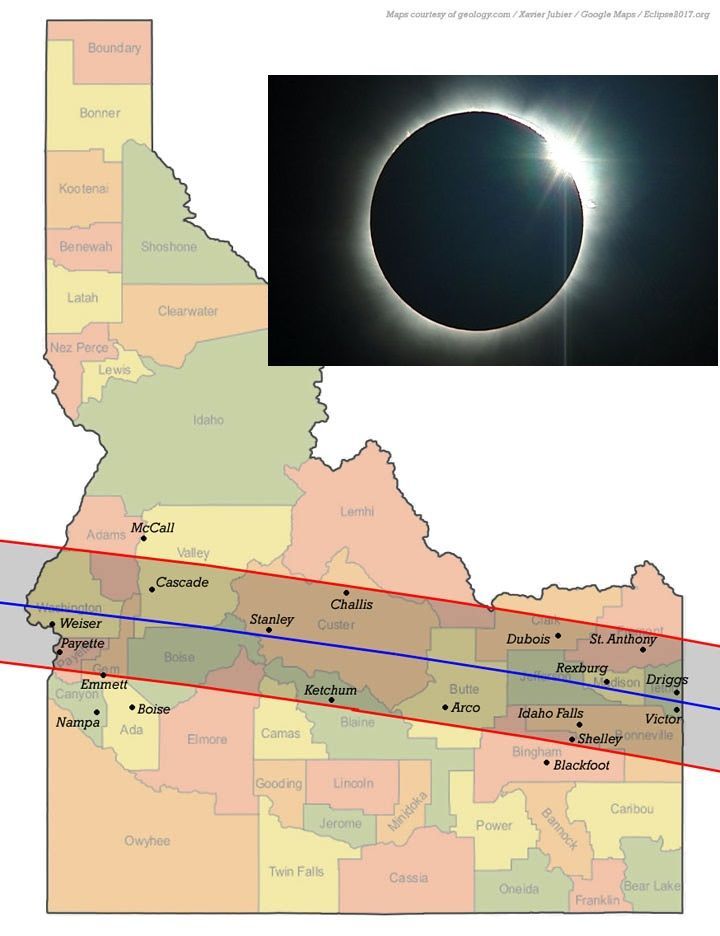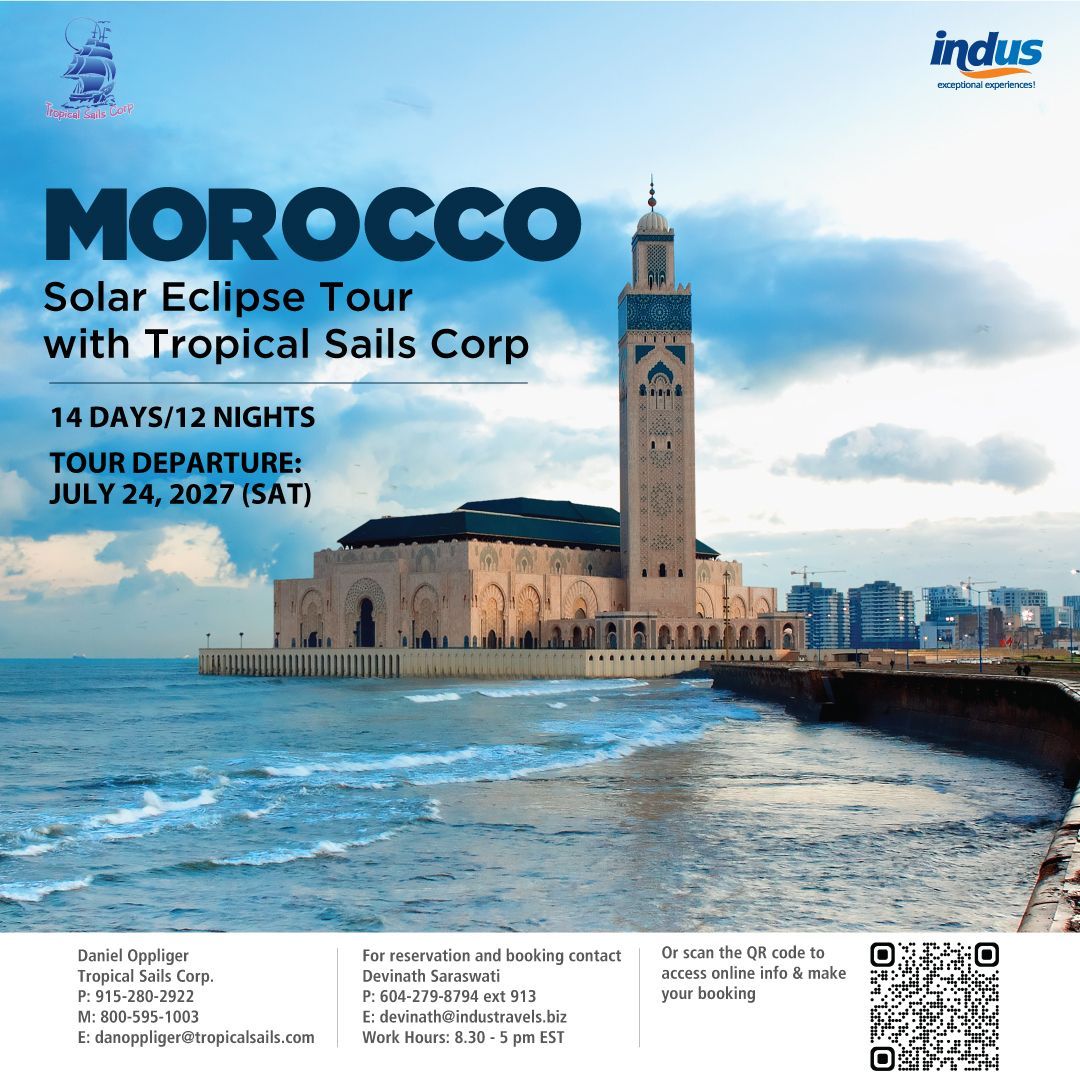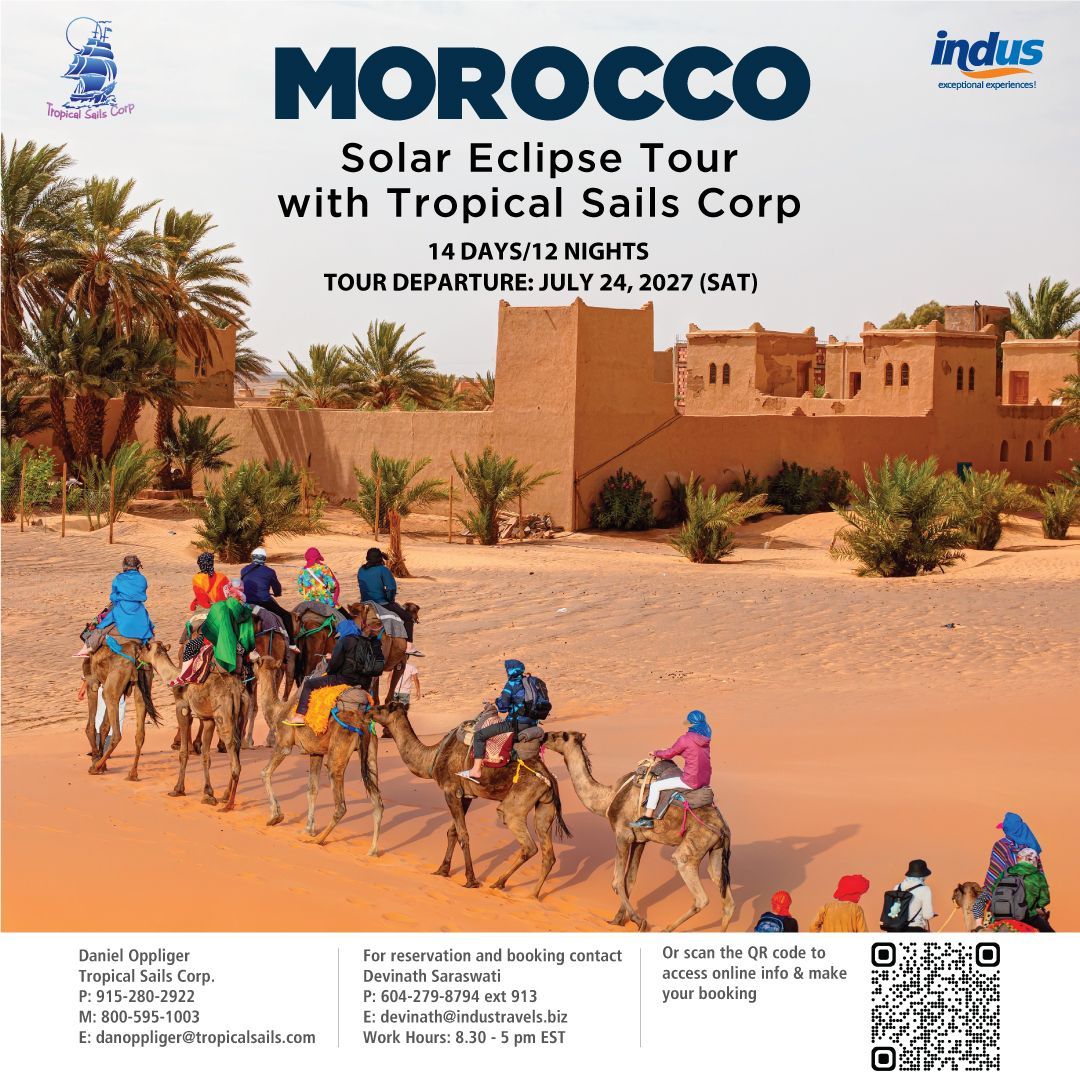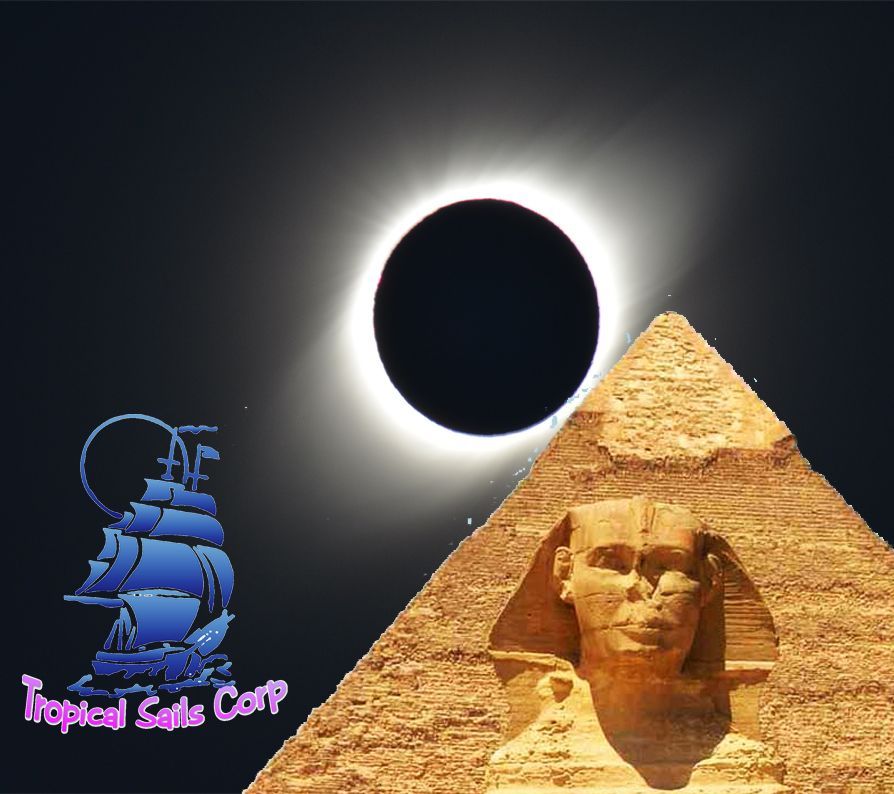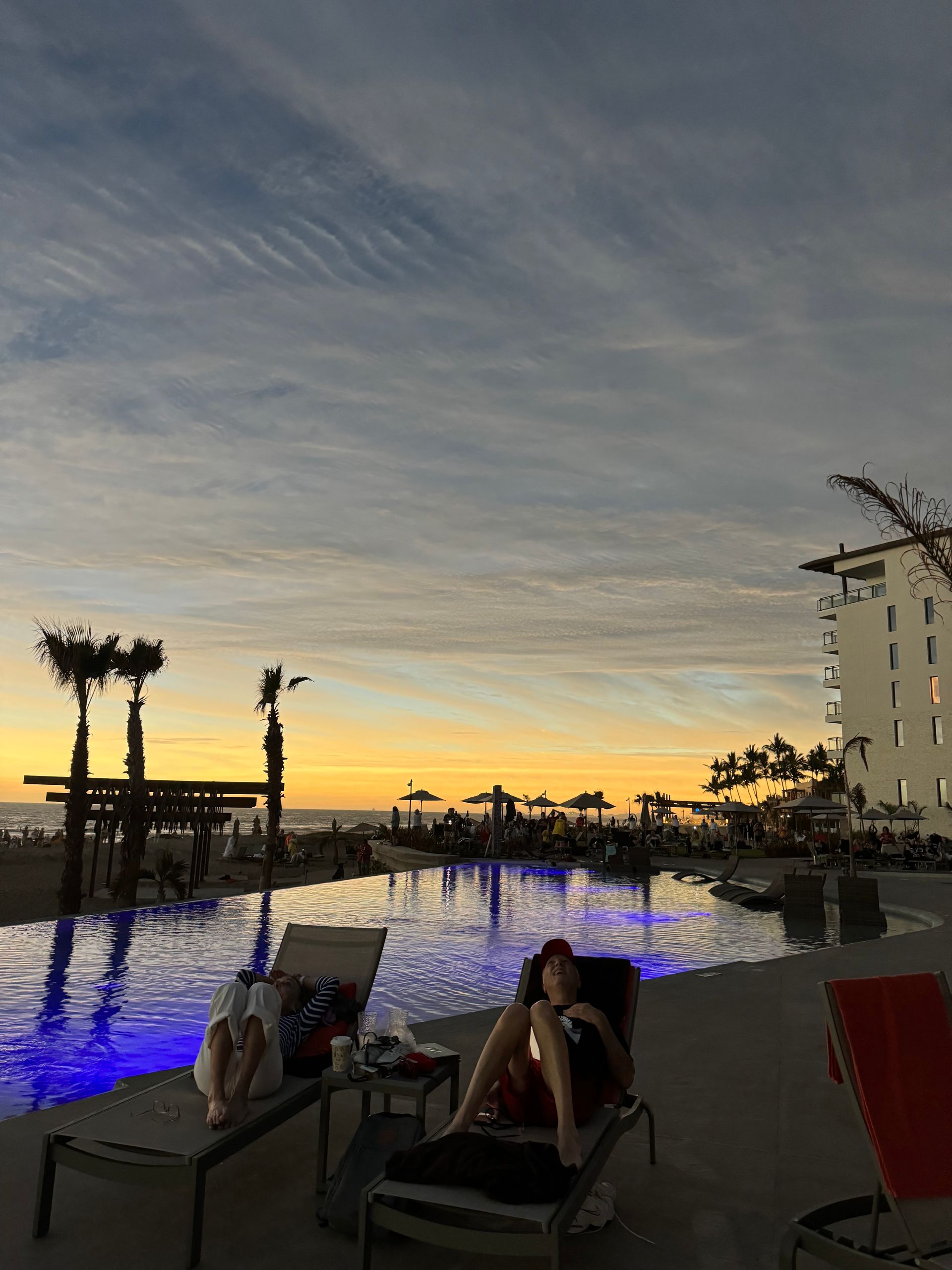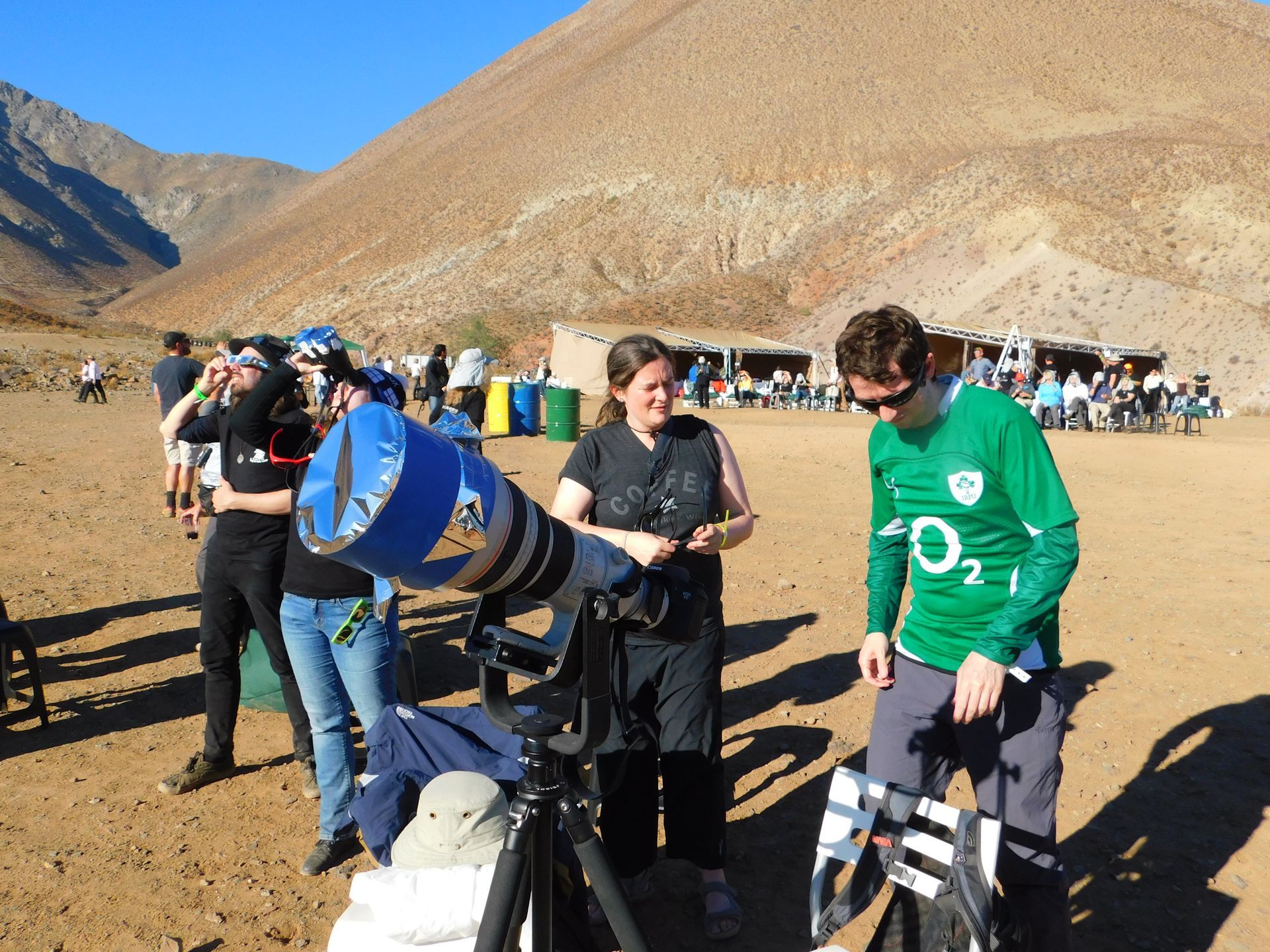Solar Eclipse in Morocco 2027
Best Totality Map & Spots
Your Guide to the Solar Eclipse in Morocco 2027 (Introduction)
The solar eclipse in Morocco 2027 will deliver one of the decade’s most cinematic totalities—crossing North Africa on 2 August 2027 with multi‑minute darkness.
Eclipse chasers who plan early will secure the clearest skies, the best backdrops, and smooth logistics.
The essentials are simple: confirm the exact path, pick a weather‑smart region, and build a mobile plan for eclipse morning. According to NASA’s 2027 eclipse overview, Morocco sits on the early part of the track, with totality lasting several minutes depending on location. Pair that with the Xavier Jubier interactive map to lock your coordinates.
This guide gives you a totality‑first game plan: precise mapping, best viewing zones, historical cloud‑cover patterns, travel routes, safe‑viewing tips, and photography setups. Read on to turn this once‑in‑a‑lifetime eclipse into your sharpest images and smoothest chase.
Plan smarter now. Download the path on NASA and cross‑check with Xavier Jubier’s map; then bookmark your top three sites within the totality band.
2027 Morocco Totality Path Map: Exact Track, Timing, and Duration
Lock the path first—totality depends on meters, not miles. Use the official geometry to pick sites on or near the centerline for longer darkness.
Morocco experiences totality on 2 August 2027, with a midday passage. Local timing varies by site, so verify contact times for your exact coordinates via timeanddate’s eclipse calculator and the NASA map. Expect several minutes of totality on the centerline, tapering to seconds near the edges.
For pinpoint planning, drop GPS pins on the Xavier Jubier interactive map. It overlays centerline, limits, duration contours, and contact times—ideal for choosing sites and backups. Centerline proximity can add crucial seconds, so micro‑site where terrain, horizons, and access align.
How to use the map in under 5 minutes
Pick a candidate town, zoom to road‑level, and place markers within the totality band. Note C2, C3 times and duration, then sketch a 20–40 km mobility ring for eclipse morning pivots. Verify local daylight saving offset; Morocco typically runs UTC+1 in summer.
Close this step with a printed screenshot and offline copy. Your on‑paper backup saves the day if networks get congested.
Best Eclipse Viewing Locations in Morocco: Coastal, Desert, and Atlas Picks
Choose landscapes that match your style—coastlines, mountains, or open plateaus—inside the totality band. You’ll balance vistas, weather, and access.
Coastal options offer dramatic sea horizons and cool air. The Atlantic and Mediterranean edges can introduce morning marine haze, but often clear by late morning. Inland plateaus and foothills add dry clarity and long sightlines. Aim for open horizons to capture low‑contrast coronal streamers.
Desert‑leaning interiors (hamada and steppe) provide stark minimalism and stable air, while mountain edges give elevated perspectives with foreground texture. If your dream is dunes or dramatic limestone, confirm those exact spots fall within totality using Jubier’s map before you book.
Shortlist criteria that never fail
● Centerline advantage: Add 30–90+ seconds versus edge sites
● Open horizon: Fewer skyline obstructions, cleaner corona
● Fast egress: Direct access to a national road for weather reroutes
Scout on arrival and keep two alternates within a 30–60 minute drive.
Where to Photograph Totality in Morocco: Iconic Landscapes and Framing Ideas
Plan your composition now so you can shoot on instinct during totality. Decide whether you’re telling a landscape story or a tight‑corona story.
For wide shots, anchor the frame with coast cliffs, whitewashed villages, or terraced hillsides. For telephoto, a 400–800mm equivalent isolates prominences and inner corona. Dual‑rig setups—one wide, one tele—maximize storytelling without lens swaps.
Use PhotoPills or Stellarium to simulate Sun altitude and azimuth at C2/C3 for your exact site. That lets you place the Sun above a ridge, minaret, or lighthouse. Keep a sturdy tripod, a quick gimbal head for the long lens, and a short intervalometer program for bracketing during totality.
Simple framing wins under pressure
Pre‑focus at infinity, tape your focus ring, and mark tripod legs for a quick reset. Shoot RAW, and bracket 7–9 exposures at 1–2 EV steps during totality for coronal detail. Practice on the Moon the week before to lock muscle memory.
Your best images come from rehearsed timing, calm pacing, and no lens changes after C2.
Morocco July 2027 Eclipse Cloud Cover: Historical Weather and Clear-Sky Odds
Historical climatology points to better odds inland than along some marine‑influenced coasts. Early August aligns closely with late‑July patterns, so July stats are a useful proxy.
Climatological datasets like NOAA NCEI and the Copernicus Climate Data Store (ERA5) show summer marine layers near parts of the Atlantic coast, with clearer skies inland and in the northeast. Mediterranean shores can be relatively dry with haze; interiors trend sunny with convective clouds building later in the afternoon.
Focus on late‑morning to midday windows when the eclipse occurs; convection typically peaks later, improving odds. A mobile plan beats any single statistic—drive 30–150 km to chase a blue patch if forecasts turn. Combine seasonal norms with 48–12 hour forecasts from national services.
Turning climate into decisions
Arrive two days early, watch satellite loops, and mark inland alternates away from coastal stratus corridors. Cross‑check model guidance with surface observations before you sleep the night before totality.
Use long‑term climate as a guide, then let real‑time weather make the final call.
Eclipse Travel Logistics in Morocco: Airports, Routes, and On-the-Ground Mobility
Fly into the nearest hub to your target corridor, then stay nimble by road. Northern and northeastern gateways put you within quick reach of multiple sites.
Primary airports serving the region include Casablanca (CMN), Rabat (RBA), Tangier (TNG), Fez (FEZ), and Oujda (OUD). Check schedules and slot times with ONDA – Moroccan Airports and build in buffer days for weather flexibility. Self‑drive gives the best agility on eclipse morning.
Major highways and national roads offer fast east‑west connections, with secondary roads branching into rural plateaus. Keep fuel topped off the day before and download offline maps. For official travel info and regional highlights, browse Visit Morocco.
Mobility that works on eclipse day
Choose a central base near the path, then pre‑drive routes to alternates at dusk the night before. Share your pin drops with your group and agree on time gates for “go/no‑go” moves.
The combination of a full tank, printed maps, and clear decision points is your silent superpower.
Local Timing and Day-Of Game Plan: Arrival, Setup, and Backup Sites
Treat eclipse morning like a live production—arrive early and work the checklist. Your future self will thank you when nerves spike before C2.
Arrive at nautical dawn to secure space, level tripods, and run a dry‑run on the partial phases. Set hard decision gates for weather moves (e.g., T‑120, T‑60 minutes). If clouds threaten, execute your pre‑planned pivot to a backup within your mobility ring.
A smooth run-through
Lay out gear in order of use, tape your sequence to a tripod leg, and call out times with a partner. Confirm local time offset (typically UTC+1 in August) and sync devices to the same source to avoid timing drift.
Safe Solar Viewing and Photography Tips: Filters, Exposure, and Checklists
You must use certified solar filters for every partial phase—only remove them during totality. Eye safety and sensor safety come first.
Follow the guidance from the AAS Solar Eclipse Task Force and use filters conforming to ISO 12312‑2. For cameras and binoculars, attach front‑mounted solar film or glass filters; never rely on live view alone. Rehearse your “filter off at C2 / filter on at C3” steps so they’re automatic.
Minimalist shooting checklist
● Filters on for partials: Glass or film, ISO 12312‑2 compliant
● Bracket during totality: 7–9 frames, 1–2 EV spacing
● Hands off tripod: Use remote or 2‑sec timer to reduce shake
For deeper technique and exposure baselines, study MrEclipse/Fred Espenak’s guides alongside your own practice sessions.
Accommodation and Permits Near the Totality Path: Booking Strategies
Book early near your chosen corridor, then keep a cancellable backup inland. This protects you against clouds and surging demand.
Prioritize properties with late cancellation, on‑site parking, and quick highway access. Rural guesthouses can be ideal staging points—confirm 24/7 check‑in for pre‑dawn departures. If you plan to fly drones, note that Morocco restricts recreational use; permissions are required.
Permits and drone rules
Review drone restrictions well in advance; the U.S. Embassy notes permits are required and unauthorized imports are often confiscated (U.S. Embassy Morocco on drones). When in doubt, leave drones at home and focus on ground‑based imagery.
Cultural and Environmental Etiquette: Respectful Eclipse Chasing in Morocco
Respect local customs, private land, and fragile environments. A thoughtful footprint earns goodwill and better access.
Dress modestly in rural areas, ask permission before entering fields, and offer thanks if locals welcome you. Pack out all waste and avoid trampling vegetation; the Leave No Trace principles travel well anywhere. A friendly greeting and a smile go a long way on eclipse day.
Community-first approach
Share the view with neighbors, carry extra eclipse glasses, and explain the timeline. You’ll make friends—and maybe gain a cloud report from a farmer down the road.
> Need a pre‑flight check? Cross‑verify your plan with official resources like NASA’s 2027 page and route logistics from ONDA before you lock bookings.
Quick Planning Consultation: Book a Session to Lock Your Morocco 2027 Eclipse Plan (Conclusion)
A clear map, a mobile plan, and a practiced shooting script turn stress into awe. The solar eclipse in Morocco2027 rewards those who prepare and adapt.
Start now by confirming your centerline sites, booking flexible stays, and rehearsing your timing. Combine climate history with 72‑hour forecasts, then be ready to drive for blue sky. Safety first, filters on for partials, and no lens changes after C2.
When totality arrives, breathe, look up, and remember to take a few frames with your eyes only. The corona will be with you forever—both in your images and in your memory.
---
FAQs
What time is the solar eclipse in Morocco on 2 August 2027? Local times vary by location, but totality occurs around midday. To get precise contact times (C1–C4) for your chosen coordinates, use timeanddate’s calculator and confirm against NASA’s map.
How long will totality last in Morocco? Duration depends on distance from the centerline; expect several minutes on the centerline, dropping quickly toward the edges. For exact duration contours at your site, consult the Xavier Jubier interactive map.
Do I need a solar filter for my camera and eyes? Yes—filters are required for all partial phases; only remove them during totality. Follow the AAS eye safety guidance and use ISO 12312‑2 compliant filters sized for your optics.
What Moroccan airport should I fly into for the eclipse? Choose the closest hub to your planned corridor to reduce drive times: Tangier (TNG), Fez (FEZ), Oujda (OUD), Rabat (RBA), or Casablanca (CMN). Check capacity and schedules with ONDA and arrive with buffer days for weather.
Where can I find reliable cloud‑cover data for planning? Historical cloudiness and sunshine stats are available from NOAA NCEI and the Copernicus Climate Data Store. Blend these with short‑term forecasts in the final 72 hours for the best call.
